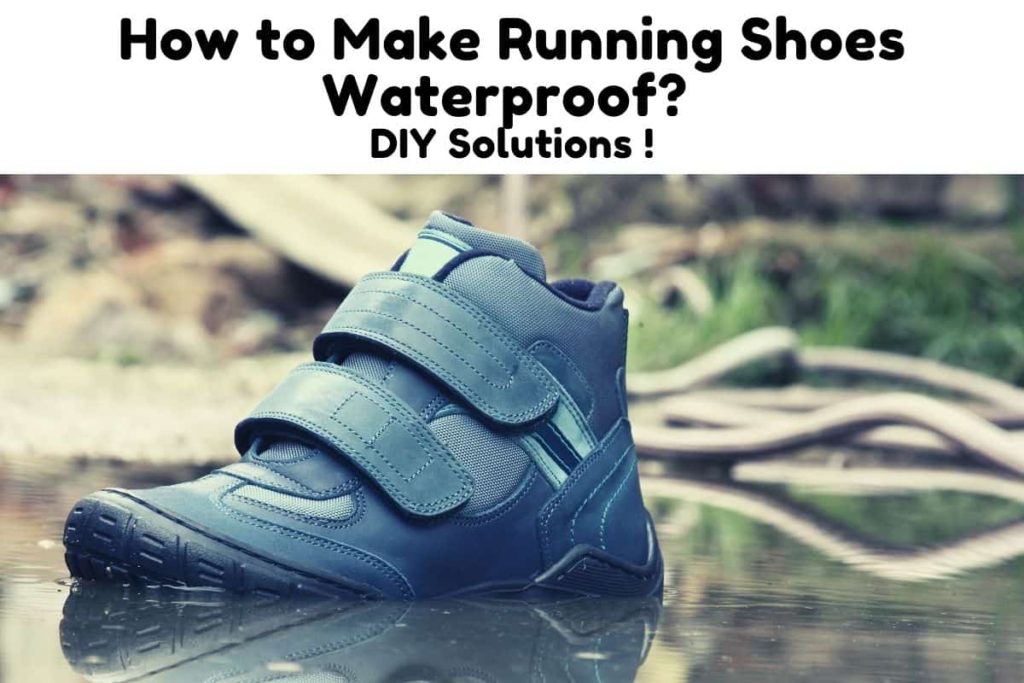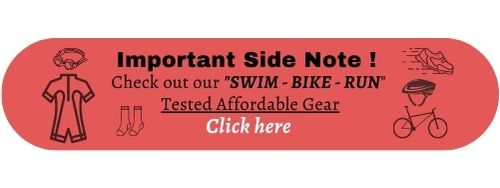You’ve been gearing up for your long run all week but one look at the drizzly forecast makes you want to stay put. It’s easy to get in the habit of being a fair-weather runner, but turning every rainy day into a rest day will seriously impact your training progress. You’ll need to practice in all kinds of weather; after all, you never know what race day will bring.
Fortunately, there are things you can do to make these runs less painful – even if you can’t control the weather. Read on for some waterproofing hacks and ways to take care of your shoes and feet.

Can I Make My Running Shoes Waterproof?
While there isn’t a way to make running shoes 100% waterproof, there are things you can do to limit the amount of water that enters your shoes during a run. You’ll also want to make sure what you wear inside your shoes is ready for the elements.
Most running shoes have an outer mesh layer that is far from waterproof. They may have a so-called “waterproof” interior, but one step in a puddle will prove that false. If that’s what you’re working with, read on for some hacks you can do with some simple household supplies.
However, if you frequently run in rainy or snowy climates, it may be worth investing in a pair of waterproof running shoes. They’ll look a little different than your standard running shoes, but they can be worth the cost if you want some added comfort. Keep in mind that even though these aren’t fully waterproof, but they’re better than the alternative.
We would recommend something like the Salomon gore-tex (GTX)-( Amazon Link ), which is a fabric designed to keep water out but allow the air to flow in.
If you’re not interested in purchasing a rain-specific pair of shoes, continue reading for ways to make your current shoes work for any run. On a side note, you may consider watershoes if you are into barefoot walking/running. For more on this, check out our post “Can You Run in Water Shoes? Not Just for Swimming Anymore!“
How Do I Protect My Running Shoes from The Rain?
If you know you’re in for some wet conditions, your first line of defense should be to use a pair of older shoes that you don’t mind sacrificing. You can try one of the waterproofing methods below or just accept the soggy fate that’s in store.
If you go the latter route, you’ll want to make sure your feet are protected in the process. Wet shoes lead to rubbing and friction which can lead to some painful blisters. You can prevent the worst of this by slathering on some Body Glide, Vaseline, or Aquaphor. Rub it over your heels and toes before you put on your socks. (Pro tip: If it’s raining, you can also use the same lubricant on other parts of your body that may end up chafing.)
As for which socks to choose, you’ll want to go for a high-performance wicking pair. You can either find a water-wicking sock from your favorite brand or you can go for one that’s specifically designed for wet conditions. SealSkinz, Showers Pass, and DexShell are some popular options. (Amazon Links)
Finally, you can consider getting shoe gaiters, which are commonly used by trail runners. These are like little sleeves that go from just above your ankle down to the heel part of your shoe. They cover a little bit of the top of the shoe, too. This is primarily meant to keep out rocks and other debris but they can also help prevent too much water from pooling in. These will suffer the same issues with breathability as waterproof shoes will, so you probably won’t want to wear them in warmer weather. Check out the one we recommend using (Amazon link)
How Do I Protect My Shoes from Water?
The most important thing you can do to protect your shoes from water damage is to allow them to thoroughly dry after your run.
Unfortunately, it’s not as easy as chucking them in the dryer. The heat can cause the adhesives to come apart and will shorten the life of your shoes. Even putting it on air dry mode can cause damage (and they wouldn’t even get all the way dry).
If you want to be really thorough, you can follow this five step process. It can be time-consuming but it will keep your shoes in great shape for longer (Source):
Step 1: Run them under some cold water
It may seem counter-intuitive, but running your soaking wet shoes under water will help remove any dirt or other debris from the surface and the interior. Shake off the excess water. If your shoes weren’t that wet to begin with, you can just wipe them off.
Step 2: Prep the shoes
Remove the laces and the insoles then open the shoe up fully.
Step 3: Add newspaper
Roll up some newspaper and stuff it inside your shoes.
Step 4: Place in a well-ventilated area
You can leave your shoes in a well-ventilated area or even near a heater or fan.
Step 5: Replace newspaper and repeat
After an hour or so, check on your shoes. Replace the wet newspaper and continue checking until they seem dry.
If you’re like me and find yourself too lazy to go through a full process after each rainy run, you can try the fridge method (bonus: there’s no newspaper required). Just put your wet shoes in front of the fridge by the vent or behind the fridge near the intake fan. Remove the insoles so they can dry fully.
Regardless of which method you go with, it’s never worth using direct heat (like a hairdryer). It can become a fire hazard if left unattended and can cause the adhesives in your shoes to wear down.
What Household Items Can Be Used to Waterproof Shoes?
Now for the fun part. If you’re not interested in buying a pair of shoes solely for rainy runs, you can try some hacks using household items. These are also helpful to keep in the back of your mind in case you’re facing an unexpected weather forecast on race day.
Waterproofing with WD-40
You can spray a liberal amount of WD-40 on the exterior of your shoes to provide a barrier that water will struggle to penetrate. This isn’t scent-proof so proceed with caution if you’re sensitive to the smell! It’ll also be very difficult to remove, so only do this on lower-priority shoes.
Silicone Spray
This may not technically be a “household item” but it’s an easy purchase to make.
Simply spritz your shoes with the spray and let them dry for a few hours. It likely won’t hold up to major rain, but it can help stave off the worst of it. It also maintains some of the breathability of your shoes (Source).
Following the above video, check out the Boot Protect Stain & Water Repellent & Fiebings Mink Oil Paste (Amazon links)
Duct Tape
Not the prettiest of these options but it gets the job done. Cut a piece of duct tape that’s a little longer than the length of your shoe. Fold it over the toe box and around the rubber sole. You’ll need some scissors to make some cuts to form the tape. Then cover the top of the toe with another piece of tape and secure it firmly so no water can sneak in (Source).
What about hairspray?
Sadly, hairspray doesn’t work as a waterproof method. While it works to keep water away from some materials, it’s not enough to truly protect your running shoes. Leave this for your beauty routine.
Final Thoughts
Household hacks and dropping money on waterproof shoes can only get you so far when it comes to rainy days. Do what you can to make your run as comfortable as possible, but also learn to embrace the particular discomfort that comes from running in the elements. It’ll only make you a stronger (albeit less dry) runner in the end.


